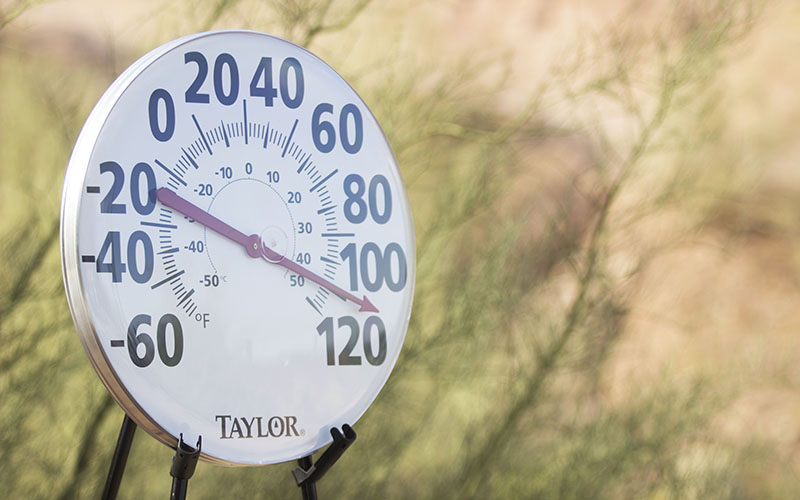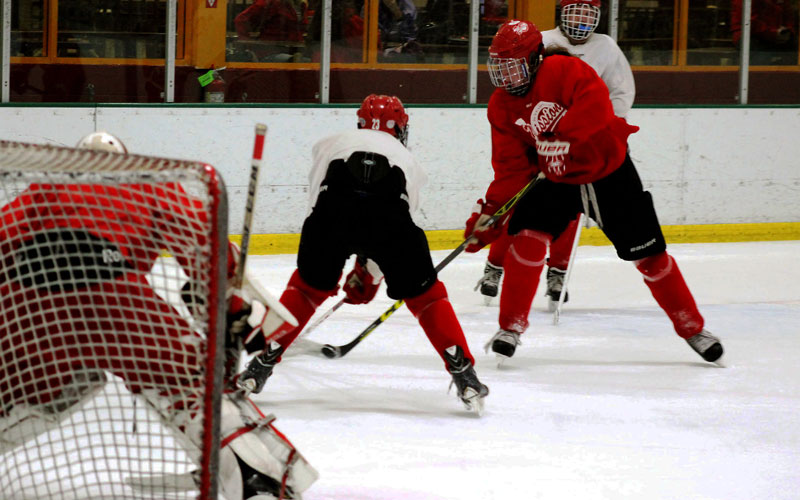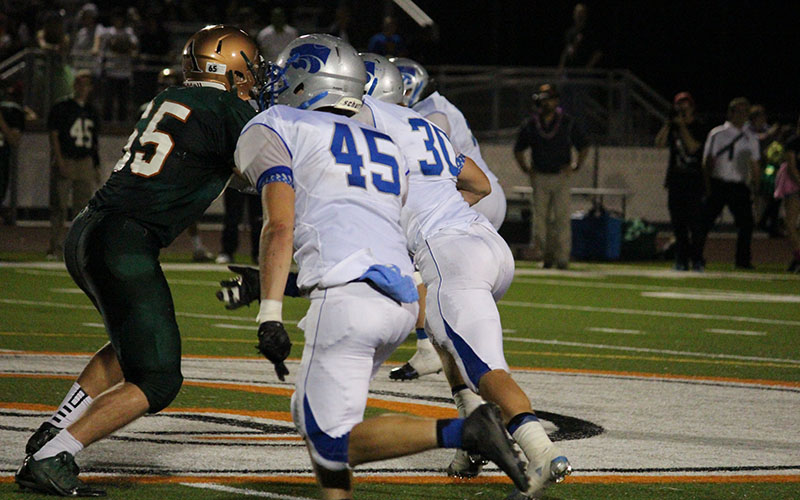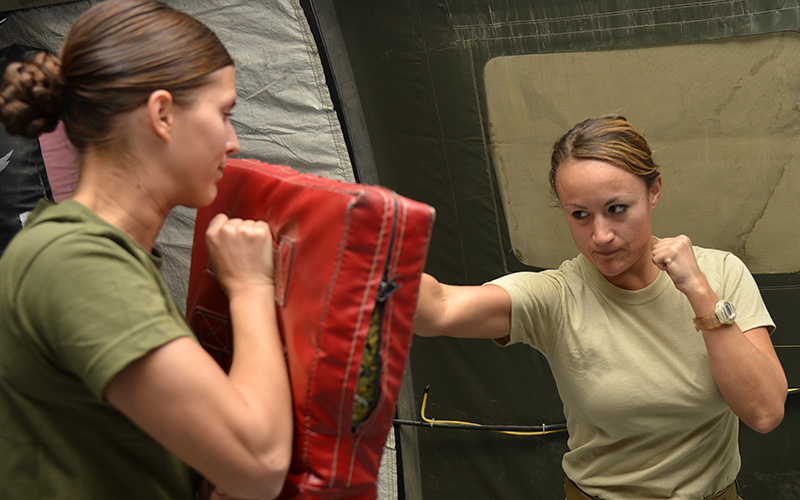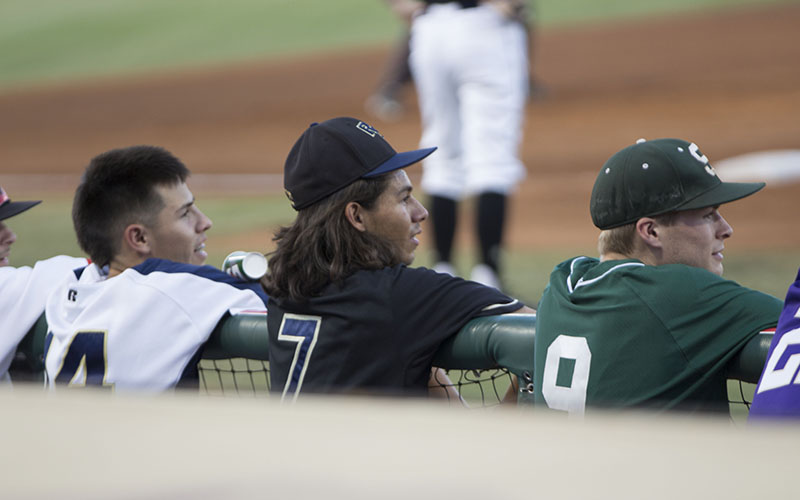Do you exercise in the Arizona heat?
The heat in Arizona, specifically the Phoenix area, finds a way to affect everyone.
Experienced a sport injury, but continue to play?
According to Stop Sports Injuries, 40 percent of sports injuries treated in hospitals are attributed to children ages 5 to 14.
Bullying and Hazing in youth sports: What’s your story?
According to the National Center for Education Statistics, during the 2014-15 school year, 20 percent of students between the ages of 12 and 18 surveyed reported being bullied at school in some way.
Athletes: What has been your experience with anxiety or depression?
Plenty of notable professional athletes have publicly acknowledged they have or are currently dealing with anxiety or depression, including Pittsburgh Steelers legendary quarterback Terry Bradshaw and Arizona Diamondbacks pitcher Zack Greinke.
Do you have experience with recruiting student athletes for high school sports?
The Arizona Interscholastic Association (AIA) has strict regulations against recruiting and giving any athletic scholarships.
Do you have experience with women’s self defense classes?
U.S. women are becoming increasingly interested in learning self defense techniques to get them out of sticky situations, should they arise.
International play beneficial for Arizona Coyotes
PHOENIX — In international play, the name on the front of the jersey is more important than the one on the back. The opportunity to represent one’s country is hard to pass up. The Coyotes recently had five players compete internationally: Christian Dvorak, Oliver Ekman-Larsson, Clayton Keller, Connor Murphy and Tobias Rieder. For a few short weeks each spring, men’s hockey performs on an international stage. The International Ice Hockey Federation Men’s World Championship originated in 1920 at the Summer Games. It is the highest profile international ice hockey tournament outside the Winter Olympics. The tournament provides a chance for NHL players, whose teams either missed the postseason or had their playoff run fall short, to continue play and have a shot at taking home a medal. One of the benefits of playing on an international stage is the diverse opportunities a tournament like this can provide its participants. Among the five Coyotes playing in Worlds, different narratives emerged. For Clayton Keller, he had the opportunity to play against elite athletes at a pro level for eight consecutive games. The forward was the youngest in the tournament and played only three games at the NHL level during the 2016-17 season. After winning gold at the World Junior Championship, Keller donned a USA jersey for the second time in one year when he laced up his skates for the Men’s World Championship. This time Keller was facing men, not boys, but he still managed to display the talent that had earned him a last-minute call-up to the NHL after his season at Boston University ended. “Playing in the World Championships was a great learning experience for Clayton,” Coyotes General Manager John Chayka said. “He was able to produce and play well against men at an elite level. This experience, and the confidence he gained by playing in the tournament, will definitely help him next season.” After starting on Team USA’s bottom line with fellow Coyotes Christian Dvorak, Keller’s five goals and two assists had him moving up the ranks and playing some first-line minutes. Throughout the tournament, Keller was key to Team USA’s success as his contributions on the ice helped the team head into the quarterfinals ranked second overall. His ability to transition his game to the pro level on international ice did not go unnoticed by his captain, Connor Murphy. “He didn’t surprise me with his skill in the tournament, just because I’d seen him in the few games he played with us at the end of the season,” Murphy said. “I think that his experience will hopefully help him have some momentum coming into training camp next year, and show everyone what he’s capable of.” The tournament marked Murphy’s fourth year representing Team USA at World Championships. Last year he served as alternate captain and was named one of Team USA’s players of the tournament. ‘This tournament has really helped me develop,” Murphy said when asked why he continues to participate each spring. “It’s a different kind of game.” Although each team is not filled with top NHL talent, Murphy said, players are still being tested in different ways. “It’s a big challenge to defend on that big ice and being able to come together with a group of guys and seeing what you can do in a three-week period,” Murphy said. Before the tournament began this year, Murphy was named captain for Team USA. It was a beneficial experience for the young defenseman. “It was eye-opening for me to wear the letter, and to be seen as a guy who could do that was really special,” Murphy said. “I’ve been going to the tournament for a while and I was a guy with a little more experience on a younger team, so they felt like I could be put in that role.” Team USA is not the only one who has noticed what Murphy can bring to the game both in play and in the locker room. Coyotes General Manager John Chayka was happy to see Murphy put in such a high position on the team. “Connor is a very mature young man and he’s made great strides on and off the ice the past year,” Chayka said. “He has emerged as a leader on our team and this experience will only help him in the future.” As a member of the Sarnia Sting, a junior team based in Ontario, Murphy was alternate captain for the 2012-13 season, but his experience this year was his first taste of leadership at the pro level. While this role was relatively new to him, he has been surrounded by strong leaders throughout his career. “I’ve been around Shane Doan the last couple of years, and he’s such a great leader with how sincere he is as a person and how much he puts into his game and how he leads by example, speaking up at the right times,” Murphy said. “Guys like Shane, and others I’ve played with, are huge to help you when you start getting put into these roles, and show you how to handle it. “I was just trying to my best to be like those guys. It was a great experience to take with me if I’m ever in another leadership role. I know now to just be myself and work hard and know that guys are looking at you and noticing that.” After battling a thumb injury all season and dealing with the loss of his mother to cancer, Oliver Ekman-Larsson was one player who used the international stage of the IIHF World Championships. This tournament was a second chance at glory. And what better way to end the hockey season than with a gold medal? “We were all very happy to see Oliver win a gold medal at the IIHF World Championships,” Chayka said. “Oliver battled through a lot of adversity this season with his thumb injury and the passing of his mom so it’s nice to see him finish the hockey season on a high note.” Although Ekman-Larsson and Murphy played on separate teams in this tournament, two seasons ago the two were defensive partners for the majority of the 2015-16 season. The USA captain, being close with Ekman-Larsson, was proud to see his teammate overcome the challenges he faced this season and have a memorable tournament. “He’s been through a lot this past year,” Murphy said. “He’s such an unbelievable guy and everyone is friends with him. He is such an incredible talent and for years he’s looked to step up his game for us and to see him come back and win gold for his country, he deserves it.” The exposure that comes with competing for the team that wins gold on an international stage is one that many feel Ekman-Larsson has long-deserved for his NHL play. “He played incredible for his country. In my opinion he’s very underrated so it’s cool to see him get rewarded that way,” Murphy said. “He’s had such a great career and he will continue to be a guy that will lead the way for us in Arizona.” Dvorak also benefited from the experience of playing for the United States in the IIHF World Championships. Rieder did, too, playing for Germany, although he suffered an ankle injury that required surgery. The international stage is a proving ground for any player, but for these three Coyotes the IIHF World Championships provided a few extra opportunities. They managed to turn an early off season into a chance to represent their country and better themselves heading into whatever next season may hold for the Coyotes.
In face of new pitch limits, Arizona HS coaches forced to ‘manage a little better’
PHOENIX – Phoenix Christian pitcher Steven Cochran powered his Cougars to a Class 2A state championship on May 13 with a complete game performance, allowing six hits in a 9-2 win over Wilcox High School. But Cochran came close to not being allowed to throw a single pitch on the biggest stage. The night before, the junior closed out his team’s 4-1 victory over Scottsdale Christian Academy, striking out two of the seven batters he faced in the game’s final two innings. With a pitch count of 25, Cochran was just six pitches away from being ineligible to pitch in the championship game. But on his 26th pitch, Cochran induced a game-ending double play that sent the Cougars into the championship. “I could tell that I was going to be needed for the next game because we had lost our other pitcher so I knew that I wasn’t going to be able to go over 30,” Cochran said. The “30” that Cochran referenced is the highest amount of pitches a sophomore, junior or senior can throw before needing at least one day's rest under the new “Pitch Smart” rule implemented by the Arizona Interscholastic Association last summer. For freshmen, the number is even lower. They have a limit of 20 pitches before they are required to rest for one day. “I was going to go get him at 30,” Phoenix Christian coach Mark Band said of the limit that, if exceeded, would have forced Cochran to rest for at least one day before being able to pitch again. “We were going to roll the dice and it really worked out. You gotta be good and sometimes you gotta have the ball bounce your way.” Varying versions of the “Pitch Smart” rule were installed across the country after the National Federation of State High School Associations required every one of its state organizations to develop a pitching restriction policy based on the amount of pitches thrown during a game. In the official news release, Elliot Hopkins, NFHS director of sports and student services and staff liaison for baseball, said the association was pleased to find a reasonable modification to the previous rule in order to emphasize the risk that occurs when pitchers overuse their throwing arms. Freshman: 95 maximum pitches. No day’s rest if throwing 0-20 pitches. One day rest if throwing 21-35 pitches. Two days off if throwing 36-50 pitches. Three days off for 51-65 pitches. Four days for 66-plus pitches. Sophomore: 95 maximum. No days off with 1-30 pitches. One day rest after 31-45 pitches. Two days after 46-60 pitches. Three days after 61-75 pitches. Four days after 76-plus pitches. Junior: 105 maximum. No days off with 1-30 pitches. One day off with 31-45 pitches. Two days off with 46-60 pitches. Three days off with 61-75 pitches. Four days off with 76-plus pitches. Senior: 105 max. No days off with 1-30 pitches. One day off with 31-45 pitches. Two days off with 46-60 pitches. Three days off with 61-75 pitches. Four days off with 76-plus pitches Incoming Arizona Interscholastic Association Executive Director David Hines, who will officially take over in July, said a committee consisting of baseball coaches and athletic directors, along with a sports medicine advisory committee made up of doctors and trainers, teamed up to set the standards for the “Pitch Smart” rule in Arizona. Initially, the proposed limits were based on a player’s age, pitch count, and how many days of rest a pitcher must have, dependent upon the amount of pitches he threw in one game. But Hines said before that was even implemented, a change was made. Instead of limiting pitchers by age, the committee decided to separate pitchers by year in school. “It was really tough for a coach to go, ‘So you’re a junior but how old are you?’ You may have a young kid, you may have an older kid, so we just started looking at the group,” Hines said. Yet some opposition to the rule still existed. The incoming AIA director said that some smaller schools fought the restrictions, arguing that their smaller rosters would not have the necessary amount of pitching to work through their schedules within these limits. Arizona high school baseball coaches have had to reinvent how they manage their pitching staffs during the season along with how they develop their staff for the future. In the weeks leading up to the season, Band said he gave players a look on the mound that he wouldn’t have in past years, just to be more proactive toward developing a large enough staff for the future. Phoenix Christian had 18 players on its roster this past season. Band used 10 of them on the mound. He experimented with different players in the offseason and adapted to the rule because he knows it is meant to keep kids healthy. “I think that it’s a good rule because you have so many coaches that will just keep running out their No. 1 guy if he says he’s feeling all right,” Band said. “I think it’s made a lot of coaches have to manage a little better because they can’t just keep sending the same guy out there.” Michael Deardoff, the coach of Class 5A state champion Raymond S. Kellis High School in Glendale, has always prided himself in knowing the limits of his pitchers and respecting their arms, including Adrian Salazar. During Kellis’ run to the state title, Salazar, a senior, threw in five of the team’s six games and threw at least 100 pitches in four of those. But the workload wasn't anything new for Salazar as he said his arm has always been ready to go. “Since I was around 9 or 10 years old, I’ve pitched for club ball and my arm never got sore,” Salazar said. “I’ve never had a problem with dead arm and it’s never really taken long for my arm to recover.” At Phoenix Christian, Band only had one pitcher throw more than 100 pitches all season. Only two of the school’s pitchers threw more than 50 innings in 2017. Band allowed just three of his pitchers to throw complete games. One of those came from Cochran with a state championship on the line. The coach of 14 years said he developed a pitching strategy before each game, so that if they played multiple games in a week, he knew when to pull out a pitcher like Cochran. While some teams like Phoenix Christian planned ahead for weeks like this, other teams tried to avoid playing for more than two games in one week. “Before the season even started I was trying to schedule a couple games and teams wouldn’t play us because it was their third game of the week,” Band said. Some teams succeeded by closely monitoring pitches and going into each game with a specific strategy. But schools like Kellis took a different approach or didn’t change their approach at all. Deardoff used a total of 10 pitchers in 2017. Like Phoenix Christian, Kellis only had two pitchers throw more than 50 innings but it rarely implemented a pitching strategy unless it had a busy week on the diamond. “It only really affected us when we had pretty long weeks with a lot of games,” Deardoff said. “I can only think of a couple times where I took a kid out because I knew I needed to bring him back later in the week.” One of those times came in the Class 5A play-in game when Kellis took on Deer Valley to get into the state championship tournament. Deardoff took Salazar out of the game after his 58th pitch, requiring him to rest for at least two days before being eligible to pitch again – just in time for his team’s first-round matchup against Verrado High School. Unfortunately, the challenges of protecting the arms of pitchers don’t just occur during the high school season. Many take to the road in the summer, playing on travel teams where this is no pitch count rule. This is where Hines believes the most trouble comes. “The biggest challenge is not during the high school season, but it’s the other time where someone may or may not be following the pitch count,” Hines said. “If the kids don’t have down time or time to rest then they are never getting enough time to repair or recover from a season.” At Phoenix Christian, Band organizes a team that plays at least 30 games during the summer. The team will also play a few games in the Dominican Republic. The summer team allows Band to give opportunities to younger players who may not get a lot of innings during the regular season. While not required, he plans to follow the rules set forth by the AIA. “We’re gonna manage the pitch count in the summer just like we do in the spring,” Band said. “Just so we’re on that page.”
